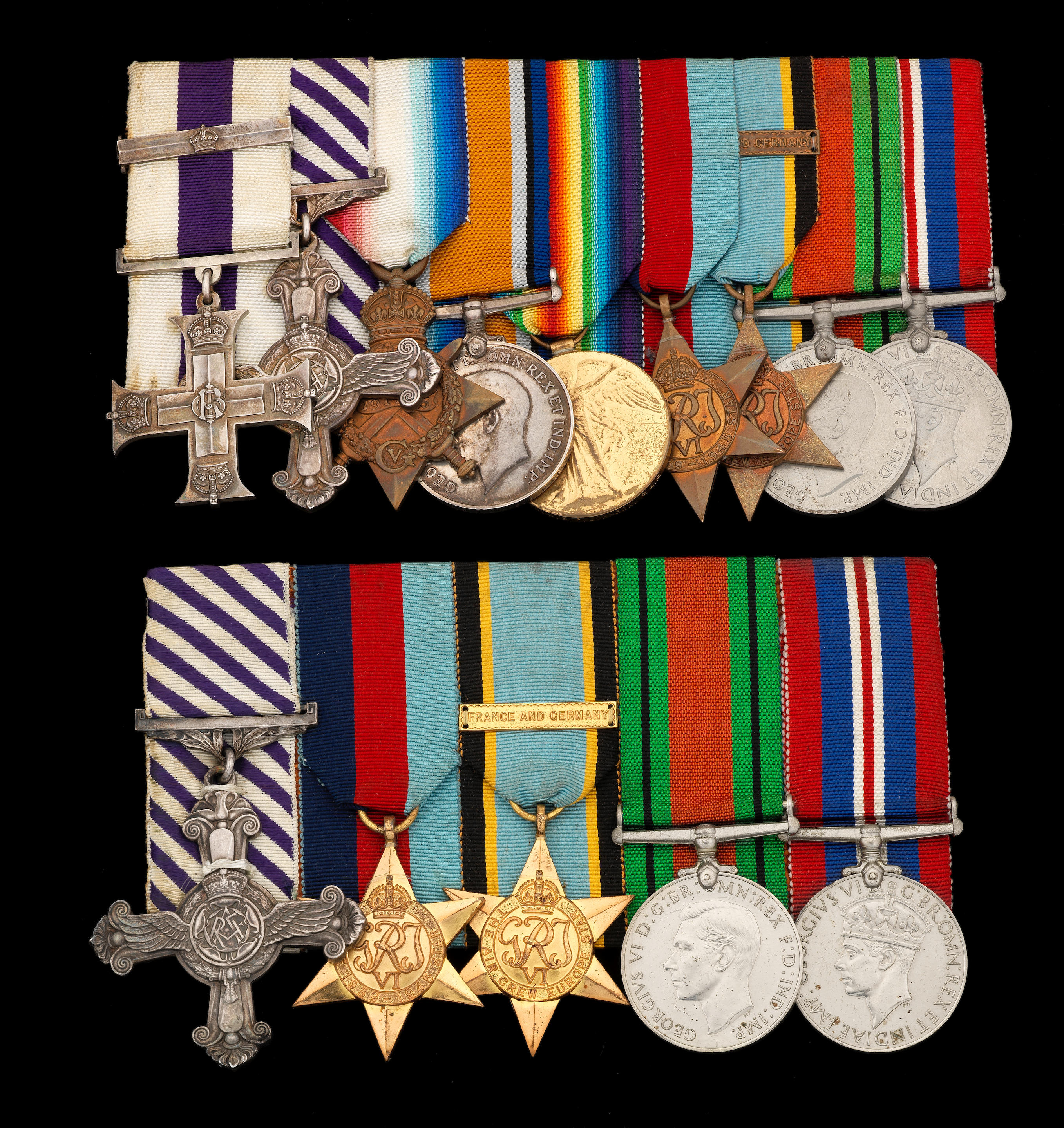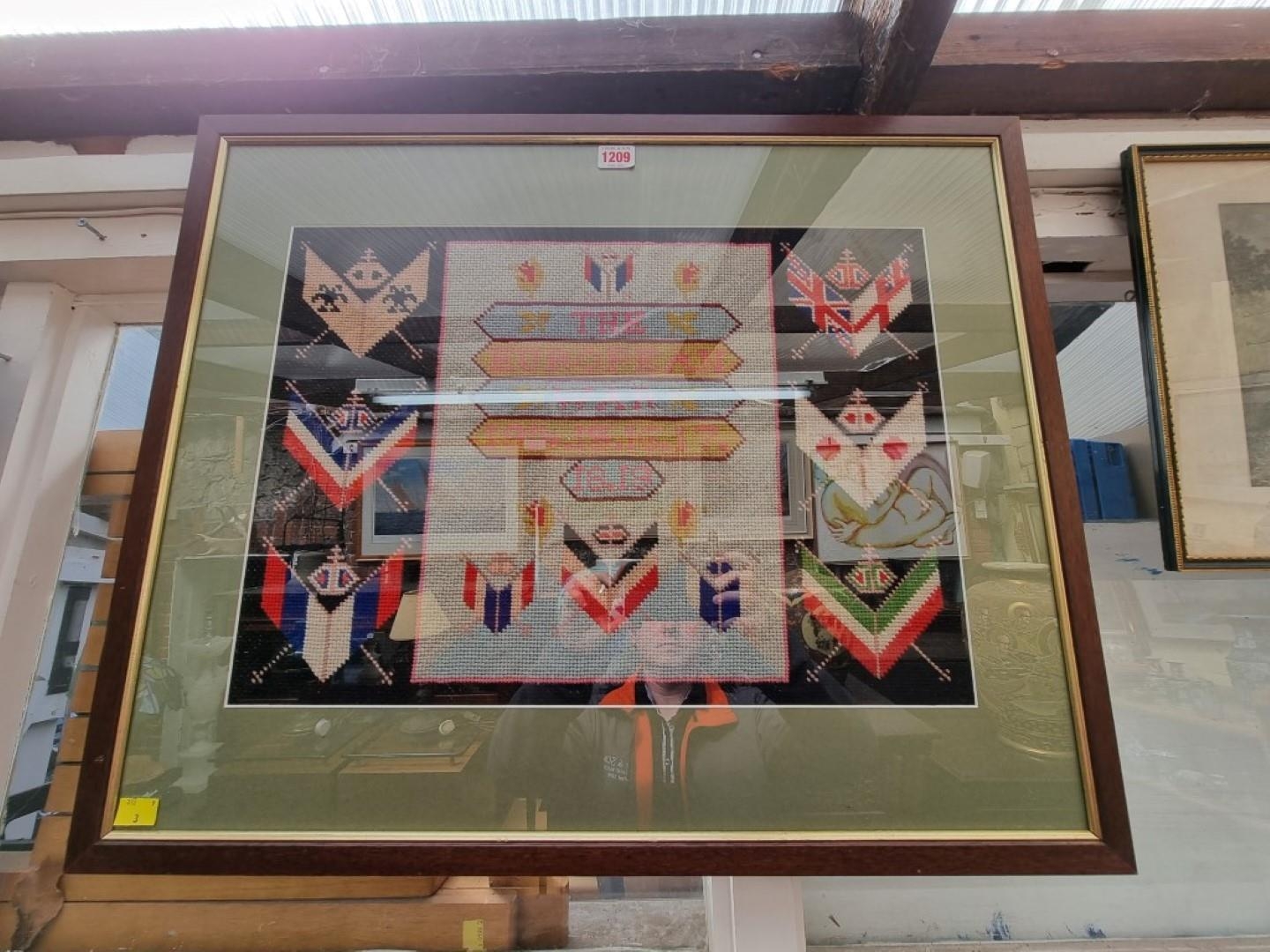An early Great War ‘Tunnellers’ D.C.M. group of four awarded to Private J. Lewis 1/2nd Battalion, Monmouthshire Regiment, for his gallantry with the 4th Divisional Mining Party at Le Toquet, in the construction of an underground mine under the German forward trenches- the first British mine blown during the War Distinguished Conduct Medal, G.V.R. (469 Pte. J. Lewis 1/2 Mon: Regt. -T.F.); 1914 Star (469 Pte. J. Lewis 1/2 Mon: R.); British War and Victory Medals (469 Pte. J. Lewis Monmouth. R.) very fine (4) £1,000-£1,400 An early Great War ‘Tunnellers’ D.C.M. group of four awarded to Private J. Lewis 1/2nd Battalion, Monmouthshire Regiment, for his gallantry with the 4th Divisional Mining Party at Le Toquet, in the construction of an underground mine under the German forward trenches- the first British mine blown during the War Distinguished Conduct Medal, G.V.R. (469 Pte. J. Lewis 1/2 Mon: Regt. -T.F.); 1914 Star (469 Pte. J. Lewis 1/2 Mon: R.); British War and Victory Medals (469 Pte. J. Lewis Monmouth. R.) very fine (4) £1,000-£1,400 D.C.M. London Gazette 3 June 1915: ‘For conspicuous gallantry, energy, and devotion to duty near Le Toquet from 18 December 1914 to 9 April 1915, when engaged in working underground (continually in water) preparing a mine which was successfully exploded at a later date. This work was very arduous and most hazardous, as the possibility of the German counter-mine being exploded at any moment was ever present.’ John Lewis attested for the Monmouthshire Regiment, and served with the 1st/2nd Battalion during the Great War on the Western Front from 7 November 1914. He was part of a detachment drawn from the Battalion in December 1914 for mining operations, and consisted of Captain A. H. Edwards 2 N.C.O.’s, and 12 men, and was called the 4th Divisional Mining Party. The History of the 2nd Battalion, The Monmouthshire Regiment, compiled by Captain G. A. Brett, gives the following details: ‘Work was commenced in conditions which the C.R.E. of the Division described as making mining impossible, and certainly their first mine had to be given up when the trenches in its neighbourhood became waterlogged. The second mine was successful, however, despite all difficulties. It was commenced from the cellar of a house a few yards behind the front line, the objective being a row of cottages behind the German forward trenches at Le Toquet. These were suspected of being used as billets and known to harbour some troublesome snipers. When about 500 feet of the mine had been dug, the enemy was heard counter-mining. A branch shaft was run out about 50 feet in their direction, in which two men were constantly stationed, alternately listening for the enemy and striking stones with an entrenching tool to deceive him. Meanwhile work in the mine proper continued, and it was eventually charged with 30 bags of gunpowder and 24 boxes of gun-cotton and tamped. Then early one morning in March 1915 the artillery bombarded for an hour, and at 8:00 a.m. the mine was fired. Half a dozen of the group of houses went up in the air, an the casualties must have been heavy. This was the first British mine blown during the War. During the same period the 4th Divisional Mining Party dug a mine from Railway Barricade. The enemy counter-mined and broke on 28 February into the work, and a fierce under-ground hand to hand fight ensued, in which the Germans were eventually worsted. Before evacuating their works they fired a gas grenade, killing one man, the only casualty suffered by the Mining Party. Captain Edwards received the congratulations of the G.O.C. for the success of the party, and was awarded the M.C., while Sergeant Yates and Privates Lewis and Morgan received the D.C.M. Soon after this the Mining Party was broken up on the formation of the Tunnelling Companies, and the men returned to the Battalion in time for the battles in May.’ Lewis subsequently transferred to the 4th Battalion, Royal Welsh Fusiliers. Sold with a copy o
An early Great War ‘Tunnellers’ D.C.M. group of four awarded to Private J. Lewis 1/2nd Battalion, Monmouthshire Regiment, for his gallantry with the 4th Divisional Mining Party at Le Toquet, in the construction of an underground mine under the German forward trenches- the first British mine blown during the War Distinguished Conduct Medal, G.V.R. (469 Pte. J. Lewis 1/2 Mon: Regt. -T.F.); 1914 Star (469 Pte. J. Lewis 1/2 Mon: R.); British War and Victory Medals (469 Pte. J. Lewis Monmouth. R.) very fine (4) £1,000-£1,400 An early Great War ‘Tunnellers’ D.C.M. group of four awarded to Private J. Lewis 1/2nd Battalion, Monmouthshire Regiment, for his gallantry with the 4th Divisional Mining Party at Le Toquet, in the construction of an underground mine under the German forward trenches- the first British mine blown during the War Distinguished Conduct Medal, G.V.R. (469 Pte. J. Lewis 1/2 Mon: Regt. -T.F.); 1914 Star (469 Pte. J. Lewis 1/2 Mon: R.); British War and Victory Medals (469 Pte. J. Lewis Monmouth. R.) very fine (4) £1,000-£1,400 D.C.M. London Gazette 3 June 1915: ‘For conspicuous gallantry, energy, and devotion to duty near Le Toquet from 18 December 1914 to 9 April 1915, when engaged in working underground (continually in water) preparing a mine which was successfully exploded at a later date. This work was very arduous and most hazardous, as the possibility of the German counter-mine being exploded at any moment was ever present.’ John Lewis attested for the Monmouthshire Regiment, and served with the 1st/2nd Battalion during the Great War on the Western Front from 7 November 1914. He was part of a detachment drawn from the Battalion in December 1914 for mining operations, and consisted of Captain A. H. Edwards 2 N.C.O.’s, and 12 men, and was called the 4th Divisional Mining Party. The History of the 2nd Battalion, The Monmouthshire Regiment, compiled by Captain G. A. Brett, gives the following details: ‘Work was commenced in conditions which the C.R.E. of the Division described as making mining impossible, and certainly their first mine had to be given up when the trenches in its neighbourhood became waterlogged. The second mine was successful, however, despite all difficulties. It was commenced from the cellar of a house a few yards behind the front line, the objective being a row of cottages behind the German forward trenches at Le Toquet. These were suspected of being used as billets and known to harbour some troublesome snipers. When about 500 feet of the mine had been dug, the enemy was heard counter-mining. A branch shaft was run out about 50 feet in their direction, in which two men were constantly stationed, alternately listening for the enemy and striking stones with an entrenching tool to deceive him. Meanwhile work in the mine proper continued, and it was eventually charged with 30 bags of gunpowder and 24 boxes of gun-cotton and tamped. Then early one morning in March 1915 the artillery bombarded for an hour, and at 8:00 a.m. the mine was fired. Half a dozen of the group of houses went up in the air, an the casualties must have been heavy. This was the first British mine blown during the War. During the same period the 4th Divisional Mining Party dug a mine from Railway Barricade. The enemy counter-mined and broke on 28 February into the work, and a fierce under-ground hand to hand fight ensued, in which the Germans were eventually worsted. Before evacuating their works they fired a gas grenade, killing one man, the only casualty suffered by the Mining Party. Captain Edwards received the congratulations of the G.O.C. for the success of the party, and was awarded the M.C., while Sergeant Yates and Privates Lewis and Morgan received the D.C.M. Soon after this the Mining Party was broken up on the formation of the Tunnelling Companies, and the men returned to the Battalion in time for the battles in May.’ Lewis subsequently transferred to the 4th Battalion, Royal Welsh Fusiliers. Sold with a copy o




.jpg)

/116549/Internet%20Image%201.jpg)


/32460/Internet%20Image%201.jpg)





Try LotSearch and its premium features for 7 days - without any costs!
Be notified automatically about new items in upcoming auctions.
Create an alert